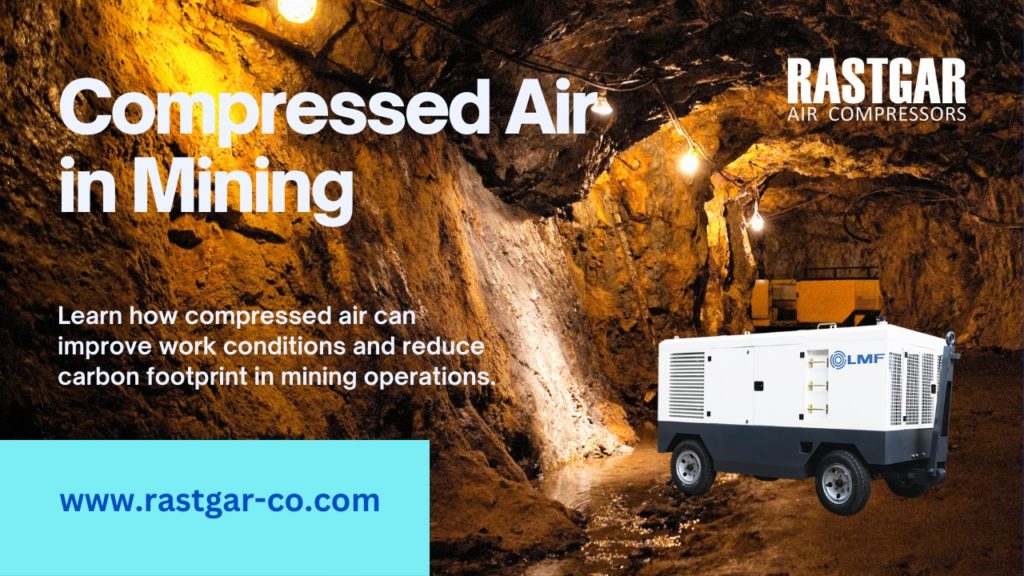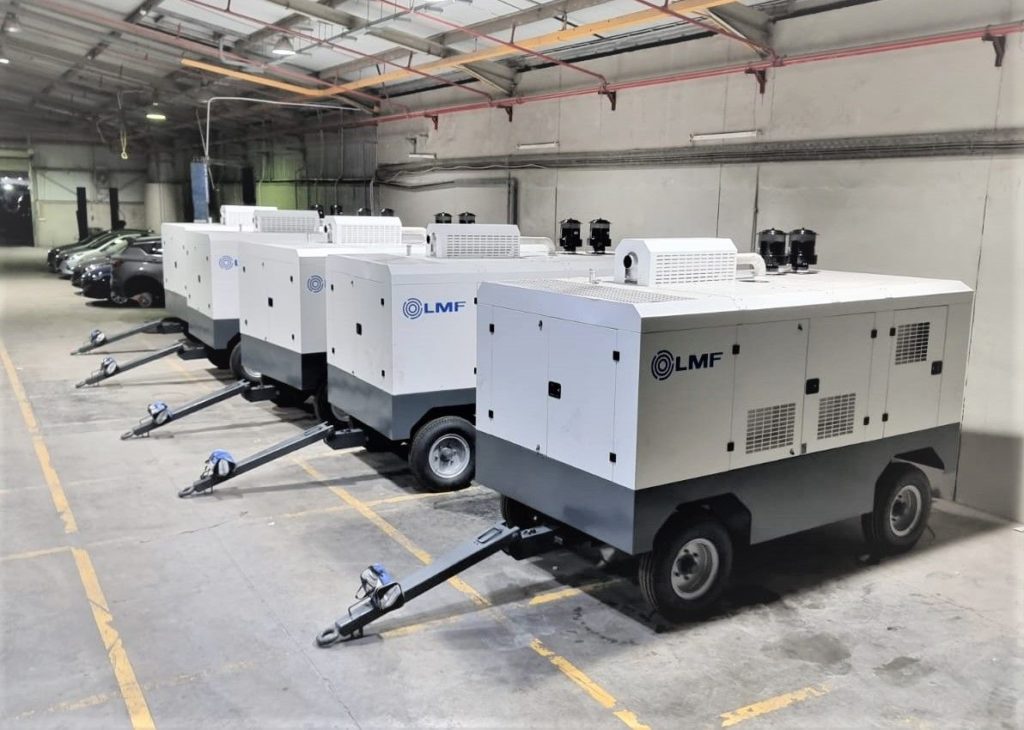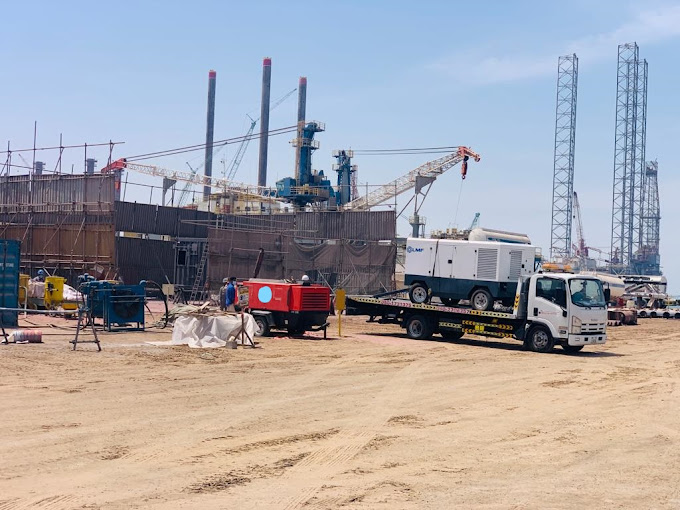COMPRESSED AIR IN MINING
Mining deep underground reserves for valuable resources is a 24/7 operation that utilizes a variety of equipment, including air compressors. Mining operators use compressed air to power drilling equipment, set off explosives, provide clean air to miners, etc. Any disruption in these processes can result in mine collapses, lost resources, and workplace injury. Compressed air is widely used in the mining sector for various applications due to its versatility, portability, and reliability.
Compressed air systems can play a crucial role in improving work conditions and reducing the carbon footprint in mining operations. Here are several ways in which compressed air can contribute to these objectives:
Reduced Carbon Footprint:
Energy Efficiency:
Modern compressed air systems are designed for energy efficiency. By utilizing advanced technologies such as variable speed drives and energy recovery systems, mining operations can minimize energy consumption and, in turn, reduce their carbon footprint.
Alternative Power Sources:
Compressed air systems can be powered by alternative and renewable energy sources, such as solar or wind power. This helps to decrease reliance on fossil fuels and lowers the overall environmental impact.

Emission Reduction:
When compared to traditional diesel-powered equipment, compressed air-driven tools and machinery produce fewer emissions. This is particularly important in confined spaces where ventilation can be challenging.
Energy Recovery:
Compressed air systems can capture and reuse the energy generated during compression processes, contributing to overall energy efficiency and reducing the need for additional power from non-renewable sources.
Selecting Energy-Efficient Equipment:
Choosing energy-efficient compressors and related equipment, as well as optimizing their operation, can significantly reduce the overall energy consumption and, consequently, the carbon footprint of mining operations.
Remote Monitoring and Control:
Implementing smart technologies for remote monitoring and control of compressed air systems allows for real-time optimization, preventing unnecessary energy use and reducing operational costs.
By incorporating these strategies, mining operations can enhance the working conditions for their employees while simultaneously taking significant steps towards environmental sustainability by minimizing their carbon footprint.
Here are some common applications of compressed air in the mining industry:
1. Drilling and Blasting:
• Rock Drills: Compressed air-powered rock drills are commonly used for drilling blast holes in both surface and underground mining operations. These drills are effective in breaking hard rock formations.
• Blasting: Compressed air is often used to power pneumatic devices that initiate explosives for controlled blasting to extract minerals.
2. Material Handling:
• Pneumatic Conveying: Compressed air is used to transport materials such as ore, coal, and other minerals through pipelines. Pneumatic conveying systems are efficient for moving bulk materials over long distances.
3. Dust Control:
• Dust Suppression: Compressed air is employed to control dust generated during mining operations. It is used to spray water or chemical suppressants to settle dust particles, improving air quality and safety.

4. Pneumatic Tools:
• Handheld Tools: Various pneumatic tools, such as drills, wrenches, and grinders, are powered by compressed air. These tools are used for maintenance, repair,and other tasks in mining operations.
5. Ventilation:
• Air Circulation: Compressed air is used to ventilate underground mines by circulating fresh air and removing hazardous gases. It helps maintain a safe working environment for miners.
6. Water Pumping:
• Dewatering: Compressed air can be used to power pumps for dewatering operations in underground mines. It helps remove excess water from the mine workings.
7. Instrumentation and Control Systems:
• Automation: Compressed air is often utilized in control systems and instrumentation, contributing to the automation of various processes in mining operations.
8. Tunnel Boring Machines:
• TBM Operation: Compressed air is sometimes used in the operation of tunnel
boring machines (TBMs) for excavating tunnels in mining projects.
9. Pipeline Pigging:
• Cleaning and Inspection: Compressed air is employed to propel pipeline pigs for cleaning and inspecting pipelines used in the transportation of mined materials.
10. Mining Rescue Operations:
• Breathing Apparatus: Compressed air is used to power breathing apparatus foremergency rescue operations in case of accidents or disasters in mining environments.
The use of compressed air in the mining sector provides a flexible and reliable energy source for
various applications, contributing to the efficiency and safety of mining operations.


Manufactured with 60 years of real world air compression experience
LMF supplies mining operations with air compression systems that can be relied on in expansive mining operations. Our extensive expertise has resulted in innovative air compressors that are engineered to last and built with reliable materials, such as stainless steel tubing. Our compressors can run 24/7,
working nonstop to keep mining operations going day and night
